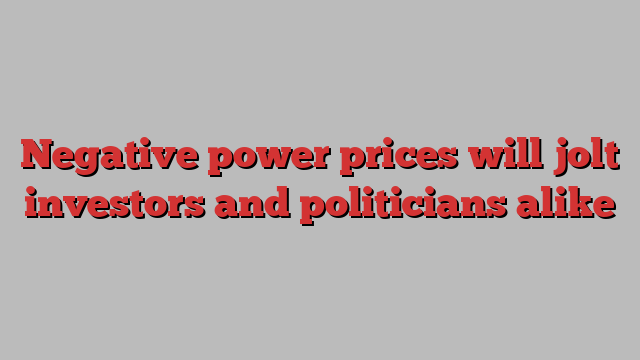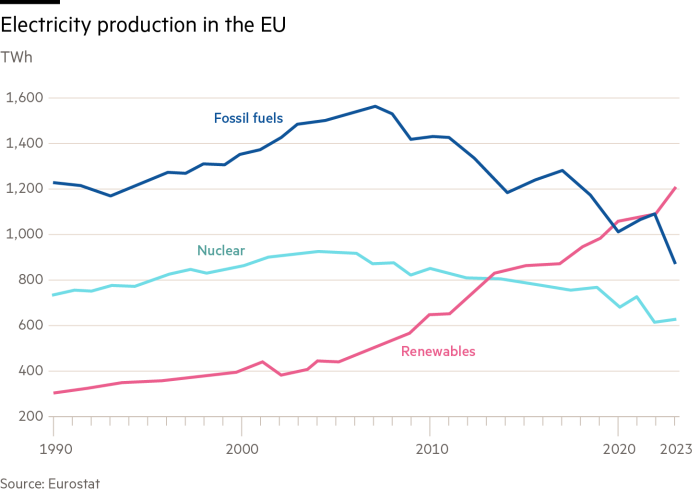
Unlock the Editor’s Digest for free
Roula Khalaf, Editor of the FT, selects her favourite stories in this weekly newsletter.
Cannibalisation is rarely ideal, regardless of the context. That holds true in European electricity markets, where cheap renewables’ growing share of production means more time when power prices drop below zero. The frequency of negative pricing will only increase, delivering an electric shock for investors and policymakers alike.
Negative pricing is not new in some markets. It occurs when weather conditions create spikes in the production of electricity from sources such as wind and solar farms, creating excess supply. So far, though, the effect has been relatively contained. In the UK last year, the hours when there were negative prices accounted for less than 3 per cent of the total, says Alon Carmel of PA Consulting.
The trend is only going one way. Electricity prices dropped into negative territory for a record 7,841 hours across Europe in the first eight months of the year, according to consultancy ICIS. There are other causes: industrial electricity demand is still low as some manufacturing facilities never reopened after the 2022 energy crisis. Construction of storage technologies has lagged as governments prioritise the rollout of renewables capacity.
The EU is aiming for renewables’ share of consumption to reach at least 42.5 per cent by 2030, up from 23 per cent in 2022. This will undoubtedly lead to more price cannibalisation.

The arbitrage opportunities here should encourage investment in storage, which will go some way towards alleviating the problem, argues LCP Delta’s Matthew Deitz. Some energy companies such as Spain’s Iberdrola and Denmark’s Ørsted are co-locating batteries at wind and solar farms.
For renewables investors, though, the greater frequency of negative pricing will clearly test business cases. True, there are ways developers can mitigate exposure, such as by striking long-term offtake contracts with businesses or energy retailers. Such “power purchase agreements” are increasingly common, although there is some disappointment among power generators that take-up has not been faster, according to trade body Eurelectric.
One politically contentious outcome would be that government support becomes a permanent feature of power markets. Mechanisms such as “contracts for difference” guarantee an index-linked price per megawatt hour of electricity produced for a period of about 15 years. This offers investors certainty, even if the UK in 2022 introduced a policy to stop generators awarded contracts from that year on from receiving contracts for difference payments when market prices were negative.
Changing energy market dynamics have already led to some — at times torturous — reform efforts, although more radical ideas such as splitting markets are often stymied by complexity and infighting. The fact that negative pricing is rising quickly means the mountain of papers on energy market reform must get higher still.